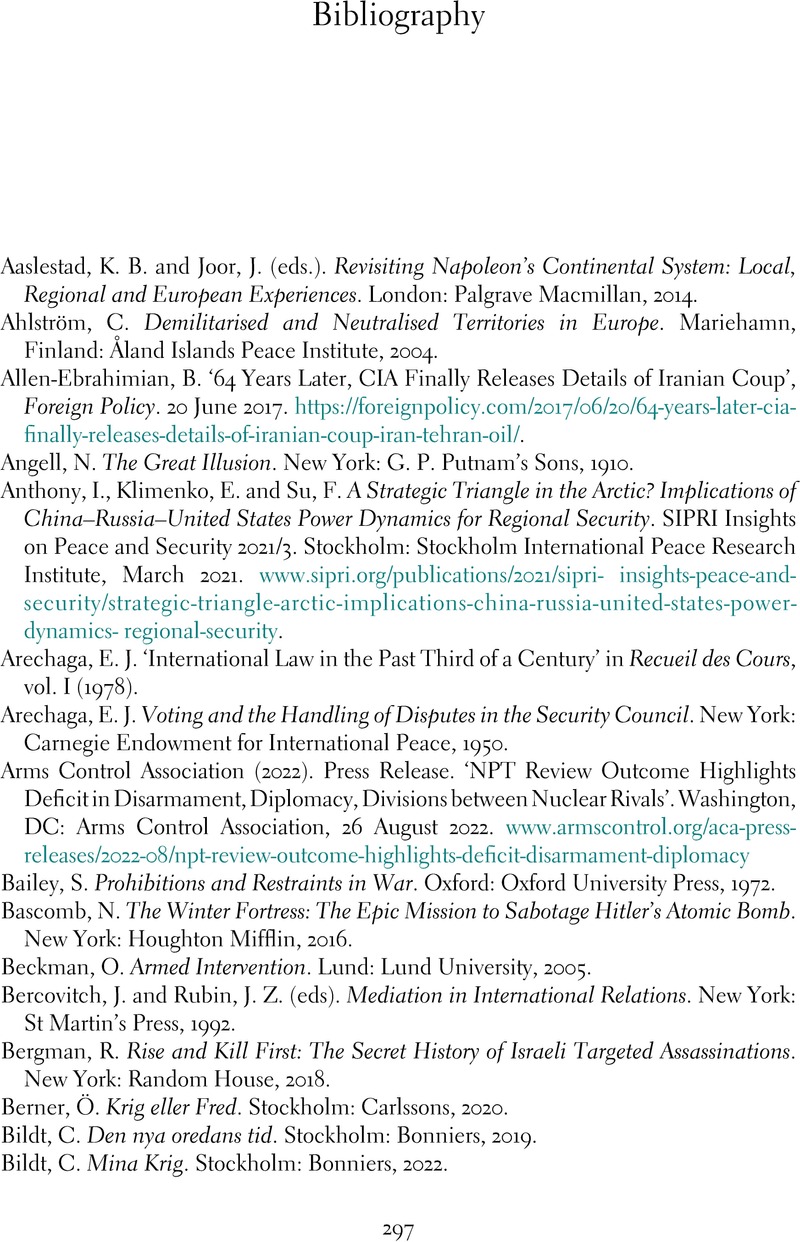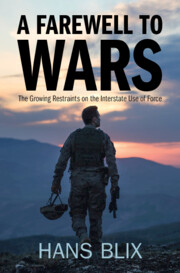Book contents
- A Farewell to Wars
- A Farewell to Wars
- Copyright page
- Contents
- Foreword
- Abbreviations
- 1 Introduction
- 2 Interstate Uses of Force, Tensions and Restraints by Regions since World War II
- 3 Interstate Uses of Force, Tensions and Restraints during Major Phases of International Relations since World War II
- 4 Incentives to the Interstate Uses of Force and Restraints
- 5 Historical Evolution of Norms and Other Means to Restrain the Use of Force
- 6 Overview of Disincentives to and Restraints on the Interstate Use of Force
- 7 Military Strength to Deter Others from Using Force
- 8 Nuclear and Other Non-conventional Weapons and Means as Deterrents and Threats
- 9 Disarmament as Restraint on the Use of Force
- 10 Preventing the Interstate Use of Force by Preventing or Solving Conflicts
- 11 Restraints on the Interstate Use of Force through Legal Norms
- 12 UN Charter Articles Relating to the Use of Force
- 13 The Security Council May Use or Authorize States or Regional Organizations to Use Force
- 14 The Right to Individual and Collective Self-Defence as an Exception to Art. 2:4
- 15 Interventions Triggered by Factors Unforeseen at the Adoption of the Charter’s Ban on the Interstate Use of Force
- 16 Interventions Seeking Regime Change, Protection of People or Punishment
- 17 Findings Regarding the Role of Norms to Restrain the Interstate Use of Force
- 18 States are Saying Farewell to Wars
- Bibliography
- Index
- References
Bibliography
Published online by Cambridge University Press: 09 November 2023
- A Farewell to Wars
- A Farewell to Wars
- Copyright page
- Contents
- Foreword
- Abbreviations
- 1 Introduction
- 2 Interstate Uses of Force, Tensions and Restraints by Regions since World War II
- 3 Interstate Uses of Force, Tensions and Restraints during Major Phases of International Relations since World War II
- 4 Incentives to the Interstate Uses of Force and Restraints
- 5 Historical Evolution of Norms and Other Means to Restrain the Use of Force
- 6 Overview of Disincentives to and Restraints on the Interstate Use of Force
- 7 Military Strength to Deter Others from Using Force
- 8 Nuclear and Other Non-conventional Weapons and Means as Deterrents and Threats
- 9 Disarmament as Restraint on the Use of Force
- 10 Preventing the Interstate Use of Force by Preventing or Solving Conflicts
- 11 Restraints on the Interstate Use of Force through Legal Norms
- 12 UN Charter Articles Relating to the Use of Force
- 13 The Security Council May Use or Authorize States or Regional Organizations to Use Force
- 14 The Right to Individual and Collective Self-Defence as an Exception to Art. 2:4
- 15 Interventions Triggered by Factors Unforeseen at the Adoption of the Charter’s Ban on the Interstate Use of Force
- 16 Interventions Seeking Regime Change, Protection of People or Punishment
- 17 Findings Regarding the Role of Norms to Restrain the Interstate Use of Force
- 18 States are Saying Farewell to Wars
- Bibliography
- Index
- References
Summary

Information
- Type
- Chapter
- Information
- A Farewell to WarsThe Growing Restraints on the Interstate Use of Force, pp. 297 - 306Publisher: Cambridge University PressPrint publication year: 2023
